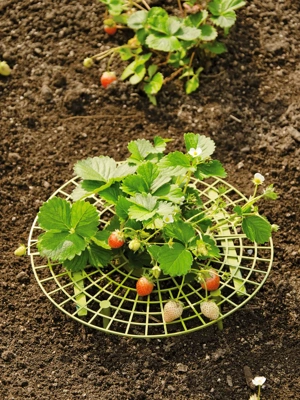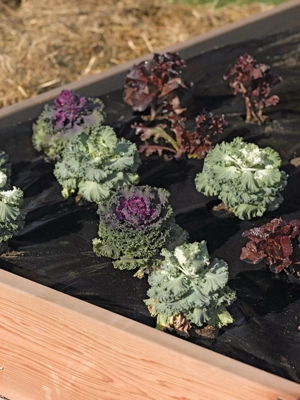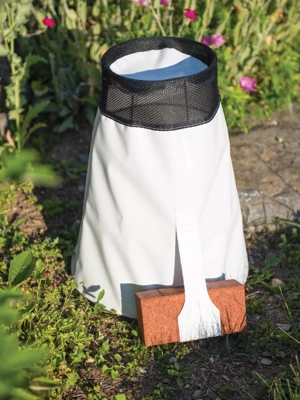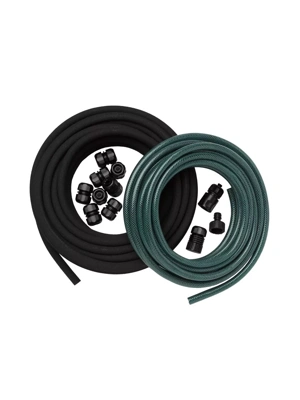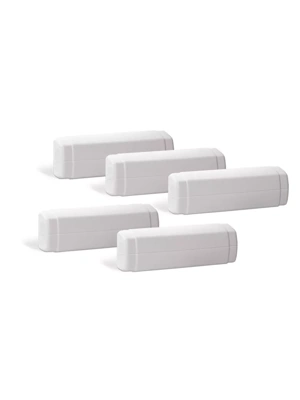Plant Diseases 101
Learn to recognize common garden diseases
Blight. Rust. Fusarium wilt. Botrytis. Smut. Scab. The names we give to plant diseases sound unpleasant and downright ominous. But then so are their consequences; they can appear suddenly and may severely weaken or kill a plant within days.
Plant diseases can be caused by fungi, bacteria, viruses or nematodes. These pathogens may be soil borne, waterborne, carried through the air, or transmitted by insects. In most cases, wet, humid weather encourages both the rate of infection and the spread of disease.
As with insect pests, your first task is to identify the problem. Here are some common symptoms of plant disease:
Leaf spots. Fungal diseases often first appear as leaf spots. You can often identify the particular pathogen by the shape, color, and margins of the spots, but this isn't critical. The same general prevention and control measures apply for most fungal leaf diseases.
Vascular diseases. Some fungal diseases, such as fusarium and verticillium wilts, penetrate plant tissues and enter the plant's vascular system. Once inside, they clog the veins, preventing water transport which, in turn, causes plants to wilt. If one section of a plant wilts dramatically and you don't see any signs of external damage to the stem where the wilting begins, suspect one of the vascular diseases.
Powdery mildew. As the name implies, powdery mildew looks like a dusty or powdery coating on leaves. It's one of the few diseases that can infect plants without the presence of moisture. In fact, plants are most vulnerable to infection in hot, dry weather. Different strains of mildew attack different plant species, so the powdery mildew on your beans probably won't spread to your pumpkins. If mildew is a problem in your area, seek out mildew-resistant plant varieties and make sure to space plants generously to promote good air circulation.
Diseases on fruits. Many of the diseases that cause leaf spots also affect fruits — cucumbers and tomatoes, for example. Common symptoms include dark spots, corky areas, sunken patches, and discoloration. Often the problem is cosmetic — cut away the affected area and you can use the rest of the fruit. Blossom-end rot, which causes the blossom end (furthest from the stem) of tomatoes, peppers and squash-family plants to turn black and decay, looks like a disease but is actually caused by fluctuations in soil moisture and nutrient availability.
Root problems. "Root rot" is a collective term for diseases that attack plant roots. In some cases, the problem is caused by overwatering, which inhibits the availability of oxygen, causing roots to decay or die. If an entire plant wilts, yet soil moisture is adequate, suspect root rot.
The same good cultural practices that discourage insect infestations are the first line of defense against plant pathogens: Build healthy soil, use compost, keep your plants appropriately watered, rotate crops, don't crowd plants, and keep the garden tidy.
Because most diseases can only infect plants when the foliage is moist, it's important to keep their foliage as dry as possible.
Sometimes what looks like disease is actually a nutritional problem. Improper pH, nutrient deficiencies, an excess of certain micro- or macronutrients in the soil, or temperature extremes can cause plants to appear diseases. And in a sense they are. Nutritional problems can usually be addressed by adding lime, compost, fertilizer or specific soil amendments. Foliar feeding, especially with organics such as seaweed and fish emulsion, can be very helpful in boosting your plants' general health and disease resistance.
As you learn more about how to keep your plants healthy, you'll find that you have fewer and fewer pest and disease problems, and it will become easier every year to control them effectively without resorting to chemicals.
Last updated: 12/05/2022
Print this Article:
Related items
Get the Dirt
Stay up to date on new articles and advice. Please fill out the information below.



